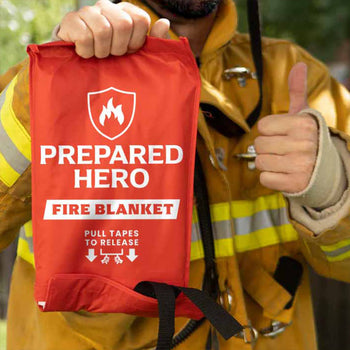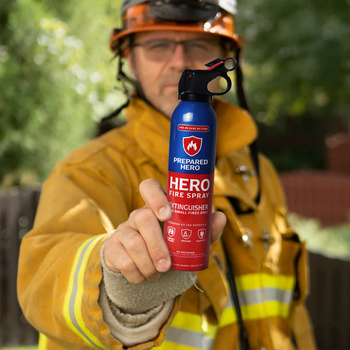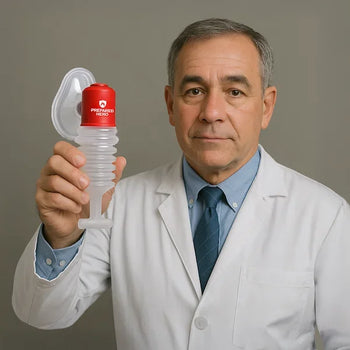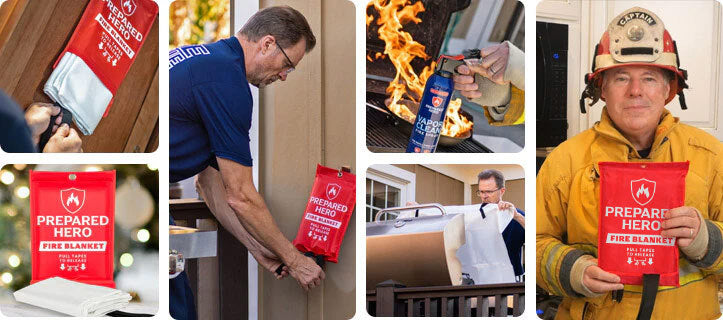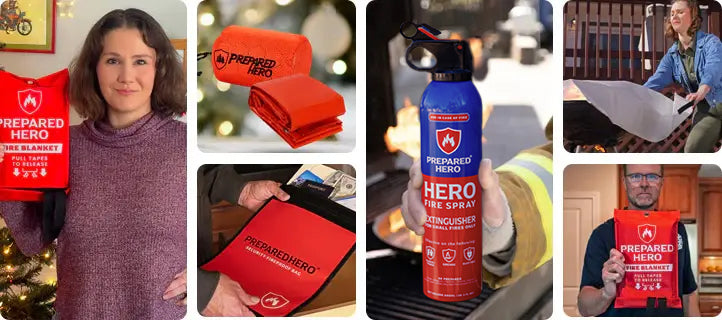Where you put your smoke detectors matters just as much as installing them. Proper placement makes sure they can detect...
A kitchen fire extinguisher can save your life. When kept at the right place, it can put out a small fire before the firefighters arrive or suppress the fire as you escape.
Unfortunately, not every fire extinguisher type can put out a kitchen fire. But you don't have to waste hundreds of dollars and endanger your loved ones by using the wrong type.
In this post, you'll learn how to choose the best kitchen fire extinguisher and where to keep it.
How to Choose the Best Kitchen Fire Extinguisher
- Pick the right extinguisher type.
- Choose the right size.
- Know how many you need.
- Learn how to use a kitchen fire extinguisher.
A kitchen fire extinguisher is just one part of a fire plan, including smoke detectors, fire sprinklers, and fire escape ladders.
To help complete your fire plan, here's how to choose the best fire extinguisher for your kitchen:
1. Pick the Right Type

As mentioned above, not every fire extinguisher can put out a kitchen fire. So, you must read the details and look for an ABC fire extinguisher (sometimes called powder, dry chemical, or multipurpose extinguisher).
But no matter how a store categorizes an extinguisher, it's the letters that you should pay attention to. You see, ABC fire extinguishers can put out the types of fire that usually start in the kitchen.
- Class A Fire: Caused by solid combustibles like paper, wood, plastic, and clothing.
- Class B Fire: Caused by flammable liquids like alcohol.
- Class C Fire: Caused by flammable gases like butane and propane.
- Class F Fire: Caused by vegetable oil or fat.
Unfortunately, a quick Internet search for kitchen fire extinguishers usually shows BC types. But you must look for a fire extinguisher that can handle class-A fires, too.
Because if you've ever set a kitchen towel or wooden spoon close to your heat source, you can start a stove or oven fire.
2. Choose the Right Size

While you might be tempted to buy class F or K fire extinguishers, remember they're usually heavy. Plus, they're meant for bigger kitchens and work best with kitchen fire suppression systems.
So unless you're willing to invest thousands or hundreds of dollars to buy fire extinguishers, we suggest you opt for an affordable choice.
Enter the Hero Fire Spray― a lightweight, easy-to-use, and affordable alternative to kitchen fire extinguishers.
Here's a table showing the differences between the Hero Fire Spray and a regular fire extinguisher:
|
Hero Fire Spray
|
Regular Fire Extinguisher
|
|
Lightweight, easy to carry
|
Heavy, hard to carry
|
|
Easy to store
|
Needs more space for storage
|
|
Can put out all types of home fire
|
Can only put out specific types of fire
|
|
100% biodegradable
|
Mostly made of non-biodegradable materials
|
|
Non-toxic
|
Toxic
|
|
Easy to clean
|
Hard to clean
|
|
Safe for kids and pets
|
Not safe for kids and pets
|
3. Know How Many You Need
The National Fire Protection Association (NFPA) recommends one fire extinguisher for your kitchen. The association also suggests having one fire extinguisher per floor.
However, this can be expensive. A fire extinguisher costs over $100 on average, so you have to spend hundreds of dollars. Plus, fire extinguishers empty quickly and are suitable for single use.
But since you have to keep your family and property safe, you must put safety measures in place.
Enter the Emergency Fire Blanket― a fast-acting, easy-to-use blanket that puts out a fire in seconds. Plus, it never expires, so you can use it as much as you want.
Just pull the quick-release tabs and toss the blanket over the fire to prevent it from turning into a big, hot mess.

And since you might not be able to put out a kitchen fire by yourself, you must have an escape plan everyone in your household knows.
Make sure everyone knows where the family bug out bags are, where to meet outside, and when to call 911.
4. Learn How to Use It

Even the best kitchen fire extinguisher is useless if you don't know how to use it.
Fortunately, a fire extinguisher is easy to use. But since you don't need it until a fire breaks out, you must be familiar with the PASS (Pull, Aim, Squeeze, Sweep) method.
The PASS Method
Pull
First, pull the pin from the fire extinguisher. The tamper seal will break after removing the pin.
Aim
Next, aim the nozzle at the base of the fire. Don't aim it at the flames.
Squeeze
Then, squeeze the handle until the fire extinguisher releases the extinguishing agent.
Sweep
Sweep the nozzle from side to side at the base of the fire. Do this until you put out the fire. If the fire reignites, aim, squeeze, and sweep again.
Pro tip: proper aiming is crucial for fire extinguishers with hose nozzles. Plus, a fire extinguisher empties in as fast as 20 seconds, so don't spend 10 seconds doing something wrong.
Where to Put a Kitchen Fire Extinguisher

So, what about the location of the kitchen fire extinguisher?
Kitchen fires are usually grease fires that can't be put out with water. In fact, trying to put out a grease fire with water causes it to spread, endangering everyone in the house.
While placing a fire extinguisher near the stove or oven area seems best, you shouldn't do it. It's because if something catches fire on the stove or in the oven, you'll have to reach through the flames to get the extinguisher, which is extremely bad.
Instead, place your kitchen fire extinguisher away from heat sources but still in an accessible place: by your kitchen's door or entrance.
If you encounter a kitchen fire that spreads quickly, you'll panic while looking for the extinguisher. By placing the extinguisher just outside your kitchen, you can easily find it and stay away from the flames.
Kitchen Fire Extinguisher Maintenance

You must check your fire extinguisher regularly to make sure it'll work when needed. Experts recommend checking your extinguisher monthly.
To do this, check the gauge to ensure the tank is pressurized (the acceptable level is in green). Then, inspect the extinguisher for apparent damage. You must also make it a habit to ensure your way to the extinguisher's not obstructed.
In addition, you must keep an eye on the expiry date. If you're past the usual six-year mark on a rechargeable extinguisher, call a licensed technician to check it.
Other Tools You Need to Put Out a Kitchen Fire
In addition to fire extinguishers, you need a few more tools to stop kitchen fire extinguishers or at least manage them before the firefighters arrive.
Here are other tools you need to ensure your family's safety:
1. Fire Spray
A fire spray is the most crucial item in a fire safety kit. Unlike a fire extinguisher, a fire spray is easy to carry, eco-friendly, and non-toxic. It's also a more affordable alternative to a fire extinguisher. On top of that, it makes fire damage cleanup easier.
2. Fire Blanket
A fire blanket is a simple yet effective tool that smothers fire. It's handy for grease fires in the kitchen, which can't be extinguished by water.
Prepared Hero's Emergency Fire Blanket is a fast-acting, easy-to-use blanket that puts out a fire in seconds. Plus, it never expires, so you can use it as much as you want.
Simply pull the quick-release tabs and toss the blanket over the fire to prevent it from turning into a big, hot mess.
3. Fire Protection Gloves
Many households use oven mitts to try putting out small fires. However, oven mitts only protect you from heat, not flames.
This is where fire protection gloves come in handy. Prepared Hero's Fire Protection Gloves can resist extreme heat (up to 1,472°F). You can even hold hot coals using them. They also withstand a sharp knife without you feeling a thing.
4. Smoke Mask
Smoke can damage your eyes, throat, nose, and lungs. It can also obscure your vision and even make you faint.
The mask protects you from smoke, poisonous gas, and extreme heat. It lets you breathe for 60 minutes so you can leave your house safely. Plus, its reflective smoke hood design protects your face and head from extreme heat.
Frequently Asked Questions
What type of fire extinguisher is used in a kitchen?
ABC, BC, B, and C types of fire extinguishers are used in the kitchen. A-type fire extinguishers put out fires caused by solid materials like paper, wood, and plastic. On the other hand, B-type extinguishers can put out fires caused by flammable liquids, while C-types put out those caused by flammable gases.
Is ABC fire extinguisher ok for kitchen?
Yes, it is ok to use an ABC fire extinguisher for the kitchen. However, ABC fire extinguishers are not suitable for commercial kitchens. They require Class K fire extinguishers instead.
Why must kitchens use Class K fire extinguishers?
Kitchens must use Class K fire extinguishers because they're built for putting out massive kitchen fires. As a result, they're most suitable for commercial kitchens and work best with hood suppression systems.
Conclusion

Kitchen fires are one of the deadliest kinds of home fires. Fortunately, they can be prevented and managed. While it's impossible to predict when a kitchen fire will start, you'll be ready if it does.
Assembling a kitchen fire kit with an fire spray, emergency fire blanket, fire protection gloves, and a smoke mask prepares you for a grease fire. Go to Prepared Hero and shop for fire safety tools now!


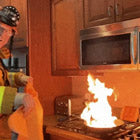 Fire
Fire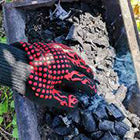 Safety
Safety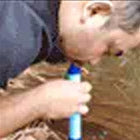 Survival
Survival Protection
Protection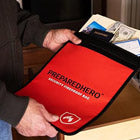 New
New
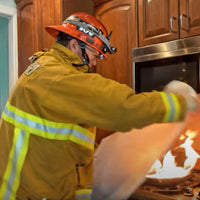 Fire
Fire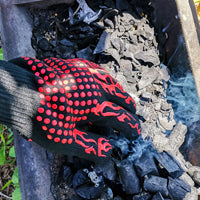 Safety
Safety Survival
Survival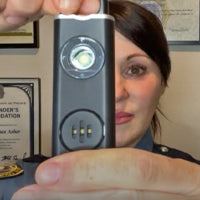 Protection
Protection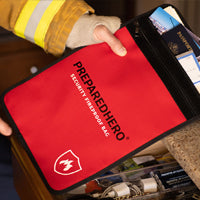 New
New
